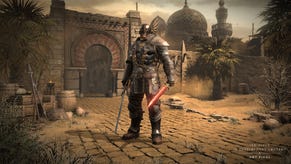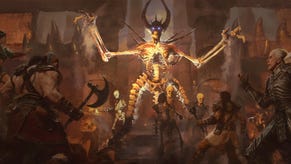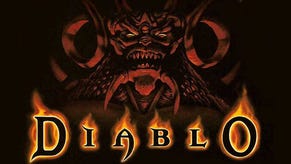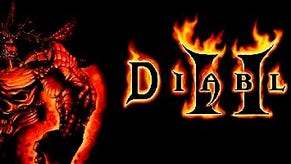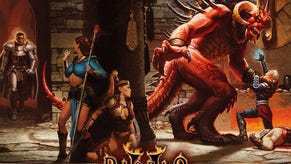The Top 25 RPGs of All Time #18: Diablo 2
Click. Click. Click. Click. Jackpot!
This article first appeared on USgamer, a partner publication of VG247. Some content, such as this article, has been migrated to VG247 for posterity after USgamer's closure - but it has not been edited or further vetted by the VG247 team.
When Blizzard North co-founders David Brevik and Max and Erich Schaefer hit the show floor at Summer CES ‘94 to pitch an RPG with randomly generated loot and levels, no one bothered to tell them they were shopping around a corpse. Every publisher they approached handed them a death certificate declaring the computer RPG dead and buried thanks to droves of slow and buggy titles burdened with the Dungeons & Dragons license and outdated graphics that paled in comparison to blazing-fast games like Quake. D&D was cool, they said, if you were a nerd who enjoyed whiling away Saturday nights holed up in your mom’s basement poring over arcane rulebooks.
Diablo resurrected CRPGs by delivering a frenetic hack-and-slash adventure that could be played with nothing but a mouse: click to move, click to attack monsters that spat up new trinkets—maybe something grand, maybe something cursed—like slot machines. Best of all was Battle.net, a free online service that matched up players from around the world and dropped them into gloomy dungeons punctuated by encounters with mobs of demons-turned-piñatas.
Cynics knocked Diablo for its simplicity. Where was the plodding, turn-based gameplay? The hours staring at a character select screen and agonizing over stats and abilities and traits? Gone, replaced by accessible mechanics and raw action.
Diablo 2 improves on its predecessor in myriad ways. The game moves at a blistering pace thanks to the ability to sprint, and the shift from claustrophobic dungeons to sprawling outdoor environments trades slower, more tactical combat for more bombastic action. However, Diablo 2's biggest achievement is the way it deftly weaves the first game's patented accessibility through a layer of player choice—the defining characteristic of a good RPG, and the missing link in the original game’s award-winning pedigree.
Of Diablo 2’s five heroes, my favorite is the Sorceress. There’s nothing more satisfying than commanding the elements against Hell’s hordes. The most challenging variant of the Sorceress, and any other character, is to play “naked.” No armor, no boots, no gloves, no jewelry, no weapons. Just stats and skills. After reading about naked characters in a DiabloII.net column, I decided to roll one.
The Sorceress is difficult enough to play because, true to RPG and fantasy convention, spell casters are weak, puny pushovers until—a dozen or so hours later—they mature into fireball-throwing, lightning-spewing gods. As a defenseless naked character, Diablo 2’s Sorceress is even tougher to keep alive because she’s allowed no items. She may be no good with a sword, but she would reap the benefits of holding a blade that, say, increases her aptitude in fire skills.
Still, playing a naked Sorceress is easier in some ways. I don't have to worry about boosting Strength to wear heavier armor, and why bother upgrading Vitality when every stat point can go into Energy to increase my mana pool? The best defense is a good offense. By the time I hit level 30, I'm almost literally a force of nature, hurling orbs of icy shards, calling down meteors that blazed fiery trails along the ground for extra damage, and spraying foes with chain lightning.
One of my Barbarians is the spellcaster’s polar opposite. He's fully clothed and armed with two large swords, one that regenerates his mana with every hit, and another that adds lighting and poison damage courtesy of gems socketed into its blade. I run into an open field to wake up enemies, and then click and hold the right-mouse button to trigger Whirlwind, transforming my muscle-bound hero into a spinning dervish of steel. Afterward I cast war cries, spell-like chants and grunts, to extract healing potions from monster corpses and increase my defense in preparation for the next melee. Online, I use a chant that enhances my and my party’s skills, making us even deadlier, while a nearby Paladin bathes us in auras that restores health.

The best roleplaying games emphasize player choice. Diablo is a moody game that deserves credit for reigniting interest in computer RPGs and paving the way for deeper experiences such as Baldur’s Gate, which followed almost two years later. But it lacks choice. The game’s Warrior, Rogue, and Sorcerer archetypes are distinguished only by their appearance and certain animations. Sorcerers swing swords slower than Warriors, but with enough points invested in Strength, they can wield some of the game’s best weapons. Warriors can fire bows. Rogues can cast high-level spells such as Apocalypse—Diablo’s version of Doom’s BFG that hits every enemy with absurdly high fire damage—by wearing rings, amulets, and armor that further increase the Magic stat until it meets the spell’s lofty requirements.
Diablo 2’s five heroes are unique. Unless you're lucky enough to happen across a sword with a finite number of Firewall casts or find a piece of armor with a four percent chance of spraying frost nova when you take damage, only the Sorceress has access to those spells. Even if you and I roll the class, odds are good that they’ll be dramatically different. You may hurl fireballs and call down bolts of lightning. I may flip the script and embrace the character’s primary disadvantage—nonexistent aptitude in close-quarters combat—by specializing in Enchant, a skill that imbues weapons with fire damage. Max out Enchant, pump up Strength and Vitality, and my Sorceress can go toe-to-toe with the biggest and bulkiest of Hell’s tough guys.
That's how Diablo 2 grabs you. It's easy to pick up, appealing to newcomers who may feel intimidated by more esoteric RPGs. Thenit sinks its hooks in you by asking you to think carefully about your character's development as you progress.
Diablo 3 is a prettier, harder-hitting game, but the option to swap out skills and the runes that augment those abilities at any time minimizes player choice. The fact that the game doles out skills and runes every time you level up means you will eventually have every skill and augmentation rune. There are obvious advantages to that, namely that it’s a lot of fun to have every tool in a character class's toolbox at your fingertips, but RPGs are about making choices and committing to them. Rolling with them. You may have different gear than my Barbarian in Diablo 3, but if I like your skill load out, I can treat my avatar like a Mr. Potato Head and copy it. And there’s little reason to play any class more than once. Why roll a second Witch Doctor when I can just rejigger skills ad infinitum?
Not all builds are viable on Hell, Diablo 2’s highest difficulty, but min-maxing to create a character able to clear every difficulty is only one way to play these games (and far from the most popular). There’s Hardcore, which gives you only one life in a game notorious for killing you early and often. You can tailor your Amazon or Paladin for PVP. Or you can get weird with builds, such as a Barbarian that attacks only with throwing items like daggers and explosive potions. You’ll face an uphill battle on Hell difficulty if you roll a Necromancer that goes all-in on poison and daggers, but victory is doable.
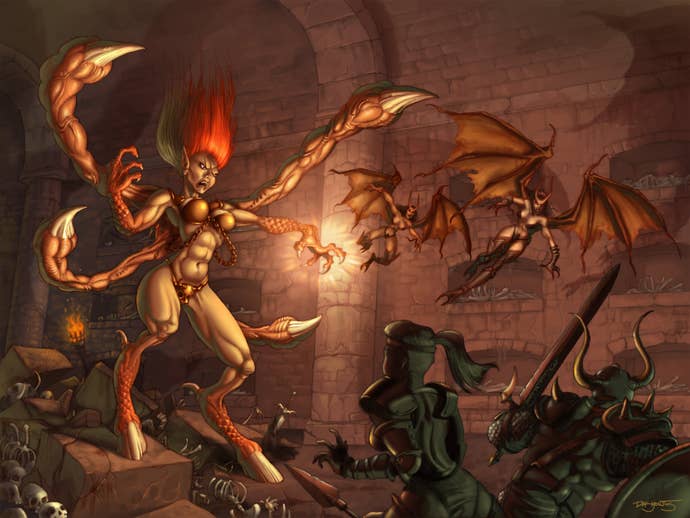
Diablo 2 may be Dungeons & Dragons' dumb cousin, but there’s fun to be had in shedding any pretense of intricate storytelling and just bashing monsters upside their heads. That’s not to say Diablo 2 has no story. For all its straightforwardness, the game is a highlight reel of memorable experiences and experiments. You’ll remember the exultation at finding your first Stone of Jordan, the heartache when you lose your favorite Hardcore character (and the stomach-twisting guilt at downloading a trainer to resurrect him… or so I’ve heard), and regale friends with memories of your first LAN party, of returning to Tristram to find it put to the torch, or the run to Mephisto that nets you that last green-tinged item you needed to assemble a complete Tal Rasha's Guardianship set.
Most of all, you’ll remember your characters. Over 18 years of play, I’ve carted a dozen or so with me from PC to PC, floppy disk to CD-ROM, USB drive to Google Drive. Wacky or viable, PVP or fine-tuned to kill the devil for the umpteenth time—Diablo 2 bonds you with your characters because they are yours.

